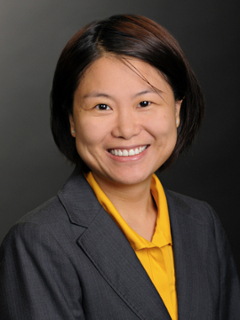Kevin Hong and Nina Huang, both new faculty members with the University of Miami Patti and Allan Herbert Business School, recently published new research on the effects of disclosing demand information on online dating platforms. The question of disclosure is a central one in the field of economics, and one pivotal to the increasingly digitalized world, according to the researchers.
Hong and Huang’s research encouraged dating companies to be more transparent and to disclose information about which profiles receive a preponderous or extraordinary number of requests. That information when shared via cues of capacity shifted users’ sorting behavior—either to avoid being rejected or simply to seek a more likely partner.

“What the platform wants from a business perspective is relatively flat distribution of demand. If they have a million people on the platform, they don’t want that million focused on one person. They want them to be evenly distributed,” explained Hong, an associate professor of business technology.
“Our results show that the intervention is particularly effective at improving matching efficiency when presented in tandem with textual message-framing cue that highlights the capacity implications of peer demand information,” he added.
According to Hong, congestion, a concentration of matching requests toward a subset of popular users, is a major concern on digital platform markets. Typically, platform operators utilize certain levers, often price-related, to control supply and demand. Yet there is no price concern on dating platforms.
For Hong, one of the most interesting facets of the study was the implication of capacity.

“This disclosure of demand seemed to move everything in the right direction with distribution becoming more flat, as we expected, and users sending fewer requests to the super popular user,” Hong said. Because users send fewer requests to the super popular profiles and seek more viable partners, the matching efficiency increases.
Huang, who is currently pursuing research with implications of user experience design for digital platforms such as online education and online health care, highlighted that the subtle cues communicated along with the disclosure were key.
"If we just disclose the information [about popularity] it should be sufficient to address the congestion problem, but we found that a more effective approach to address users’ herding behavior was emphasizing the capacity of the [popular] user with a subtle cue—that was surprising to us.”
Their study, “Managing Congestion in a Matching Market Via Demand Information Disclosure,” is forthcoming in the peer-reviewed journal Information Systems Research and assessed nearly 50,000 online dating users across Eastern Asia. It is coauthored by Gord Burtch from Boston University and Yumei He from Tulane University. A few days after online publication, a senior researcher at Match.com contacted them to learn about this research and its implications to their markets.
Hong explained that together he and Huang typically work with companies in the startup stage because these lack the personnel to work on complex problems. As pro bono consultants, they help the new firms improve their products and process and, in exchange, the firms offer the opportunity to conduct research.
Huang pointed out that far more men than women seek partners on the dating platforms. For their study, 69 percent were men, 31 percent women. According to external sources cited in this study, 85 percent of online dating users in Britain are men, 87 percent in Spain, 90 percent in Italy, and in the United States about 70 percent.
Another surprise of the study was that when given the demand information of an excessively popular female profile, average male users veered away and looked for other options. Highly popular males, however, tended to pursue more vigorously even a super popular female profile, Huang said.

Brian Doss, a psychology professor in the College of Arts and Sciences and director of OurRelationship, an online program that offers support for relationships, gave some observations on this phenomenon and dating tendencies, both online and in-person.
He referenced a U.S. study that shows that both men and women tend to send messages to people who are as desirable or slightly more desirable than them but are not very likely to send messages to people who are less desirable or those that are very much more desirable.
“We sort of try to move up. If we’re a 5, we’re going to invite a 4 to a 7 and ignore the 1 to 3s and 9s, 10s. We don’t want responses from 1 to 3s because we can tell from their profiles we’re not interested, and 9, 10s are so unlikely to respond we’re not even going to bother,” Doss said.
“If I’m a man and I’m a 5 and there are hundreds of other men 5s, then maybe I’m more likely to go after a 3 or even a 2 female partner,” suggested Doss, a clinical psychologist who over the past 15 years has shifted traditional couples therapy to an online approach.
In terms of online dating platforms, Doss suggested they have been successful in the sense that more and more people are using them. The sites have become an especially valuable outlet for LGBTQ folks who may live in rural areas or who have limited access to potential partners.
“That’s the glass half full, but, on the other hand, the half empty is that so far we’ve been pretty unsuccessful in helping people find their soulmate,” he said.
“The whole thing of these platforms, that ‘we’ll help you find your soulmate,’ we can’t really do that,” Doss noted. “In large part because we don’t know who somebody’s soulmate is—the basic science is not there.”
Hong and Huang said they were very excited for the future implications of their research in the area of observing users’ behaviors and digital traces.
“Many companies are undergoing this digital transformation to try and to set up these platforms around digital experiments,” said Hong, who is working with the business school team to develop an executive education program on digital experimentation.
“How can we help them design [a platform] in a way that makes users comfortable, makes them want to come back, spend money, and to feel valued—as researchers this is a gold mine,” Hong said.

